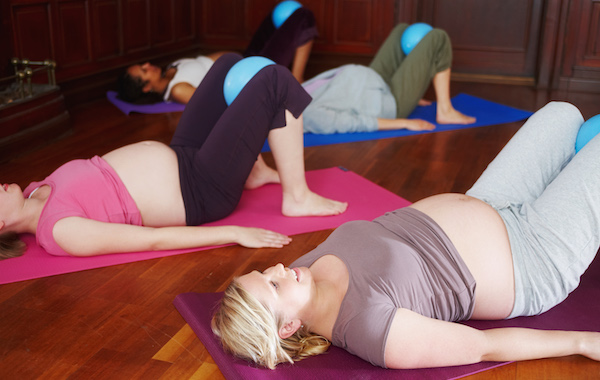Understanding Post-Pregnancy Incontinence
New motherhood is a fantastic experience, but it comes with challenges. Many new moms face postpartum incontinence, where urine leaks involuntarily. This can be frustrating, but it’s a common issue, affecting up to 50% of women due to changes in pelvic floor muscles during pregnancy and childbirth. Fortunately, at Northwest Continence Center, we understand women’s unique struggles regarding their health, and we offer treatments to help regain bladder control. This article provides insights and strategies to manage incontinence and regain confidence postpartum.
Causes And Risk Factors Of Post-Pregnancy Incontinence
During pregnancy, the growing fetus increases pressure on pelvic floor muscles, weakening them over time. Hormonal changes also affect muscle strength—childbirth, whether vaginal or cesarean, can cause further pelvic floor damage.
Risk factors for post-pregnancy incontinence include multiple pregnancies, difficult labor, delivering a large baby, and age-related changes. Despite its commonality, incontinence isn’t inevitable or normal postpartum. With appropriate treatment, many women regain bladder control and improve their quality of life. Understanding these factors helps in taking proactive steps to manage and overcome post-pregnancy incontinence.
Types Of Incontinence After Pregnancy
After pregnancy, different types of incontinence can occur, each with distinct symptoms and treatment approaches. Identifying the specific type you’re experiencing helps tailor an effective management plan with your healthcare provider.
Stress incontinence is common postpartum. Weakened pelvic floor muscles cause urine leakage during physical activities like coughing, sneezing, laughing, or exercising.
Urge incontinence involves a sudden, uncontrollable urge to urinate, followed by involuntary urine release, often linked to overactive bladder syndrome due to nerve damage, pelvic floor weakness, or bladder function changes.
Mixed incontinence combines symptoms of both stress and urge incontinence, making management more complex and requiring a comprehensive approach to address underlying causes effectively.
Common Symptoms Of Post-Pregnancy Incontinence
Post-pregnancy incontinence often includes involuntary urine leakage, varying in severity and frequency. This condition can affect women emotionally and socially, leading to self-consciousness, embarrassment, and isolation. Symptoms may also include a constant urge to urinate, difficulty emptying the bladder, and disrupted sleep due to frequent nighttime bathroom trips. Seeking help from a healthcare provider is essential, as effective treatments can significantly improve symptoms and overall well-being.
Preventive Measures For Post-Pregnancy Incontinence
Regular Kegel exercises are crucial to preventing post-pregnancy incontinence. These strengthen the pelvic floor muscles, supporting bladder control during and after pregnancy.
A balanced diet with fiber, lean proteins, and hydration regulates bladder function and prevents urinary issues. Low-impact exercises like walking or yoga strengthen the pelvic floor and core stability without strain.
Incorporating these practices into your routine can help maintain a healthy pelvic floor and reduce the risk of incontinence postpartum.

Exercises And Pelvic Floor Strengthening Techniques
Regain Bladder Control After Pregnancy-Related Incontinence with Effective Techniques
For those seeking to manage post-pregnancy incontinence effectively, consider these techniques:
- Kegel Exercises: Contract and release pelvic floor muscles to enhance strength and tone, crucial for improving bladder control.
- Biofeedback: Utilize specialized equipment to receive real-time feedback on pelvic muscle activity, optimizing the effectiveness of Kegels and improving muscle engagement.
- Additional Exercises: Incorporate bridge poses, squats, and hip thrusts to strengthen surrounding muscles and enhance core stability, supporting overall pelvic floor function.
Combining these exercises with support from a medical weight loss clinic can significantly aid in managing and improving post-pregnancy incontinence effectively.
Lifestyle Changes To Manage Post-Pregnancy Incontinence
To manage post-pregnancy incontinence effectively, consider these lifestyle changes:
- Fluid intake: Stay hydrated with water and avoid bladder-irritating beverages like coffee, tea, and alcohol.
- Weight and exercise: Maintain a healthy weight to reduce pelvic floor pressure. Incorporate low-impact exercises like walking or yoga to strengthen pelvic muscles and core stability.
- Bathroom habits: Establish a regular voiding schedule to prevent holding urine, which can lead to leakage.
These lifestyle adjustments can complement pelvic floor exercises in managing post-pregnancy incontinence.
Medical Treatments For Post-Pregnancy Incontinence
For severe or persistent post-pregnancy incontinence that doesn’t improve with lifestyle changes and exercises, medical treatments include:
- Pelvic floor physical therapy: Therapist-guided plans with biofeedback, electrical stimulation, and targeted exercises strengthen pelvic muscles and improve bladder control.
- Medications: Anticholinergics relax bladder muscles to reduce urgency, while alpha-blockers enhance urine flow and decrease leakage. These require careful medical supervision due to potential side effects.
- Surgical options: Procedures like sling surgeries or bladder neck suspensions support the urethra and bladder, reducing urine leakage. Surgery is considered for severe cases when other treatments aren’t effective.
Consulting with a healthcare provider helps determine the best treatment approach tailored to individual needs and symptoms.
Support And Resources For Women With Post-Pregnancy Incontinence
Post-pregnancy incontinence can be challenging, but you’re not alone. Consider joining support groups for empathy and advice. Healthcare providers like obstetricians and pelvic floor therapists offer specialized care and resources. Online platforms provide reliable information on managing incontinence. Seeking help is vital in improving bladder control and overall well-being after childbirth.
Conclusion: Empowering Women To Take Control Of Their Post-Pregnancy Health
Incontinence after pregnancy is a common and treatable condition that no woman should have to suffer through alone. By understanding the causes, symptoms, and available solutions, you can take proactive steps to regain control of your bladder function and improve your overall quality of life.
Through a combination of pelvic floor exercises, lifestyle changes, and, if necessary, medical interventions, you can work towards managing and even overcoming post-pregnancy incontinence. Remember, this condition does not define you, and many resources and supportive communities are available to help you on your journey to better health.
As you navigate the postpartum period, be kind to yourself, and don’t hesitate to seek the support and guidance you need. With the right approach and a commitment to your well-being, you can emerge from this chapter feeling empowered, confident, and in control of your body and life.
Remember, you are not alone, and there is hope. Take the first step towards a future free from incontinence, and embrace the joy and fulfillment of reclaiming your health and well-being.












